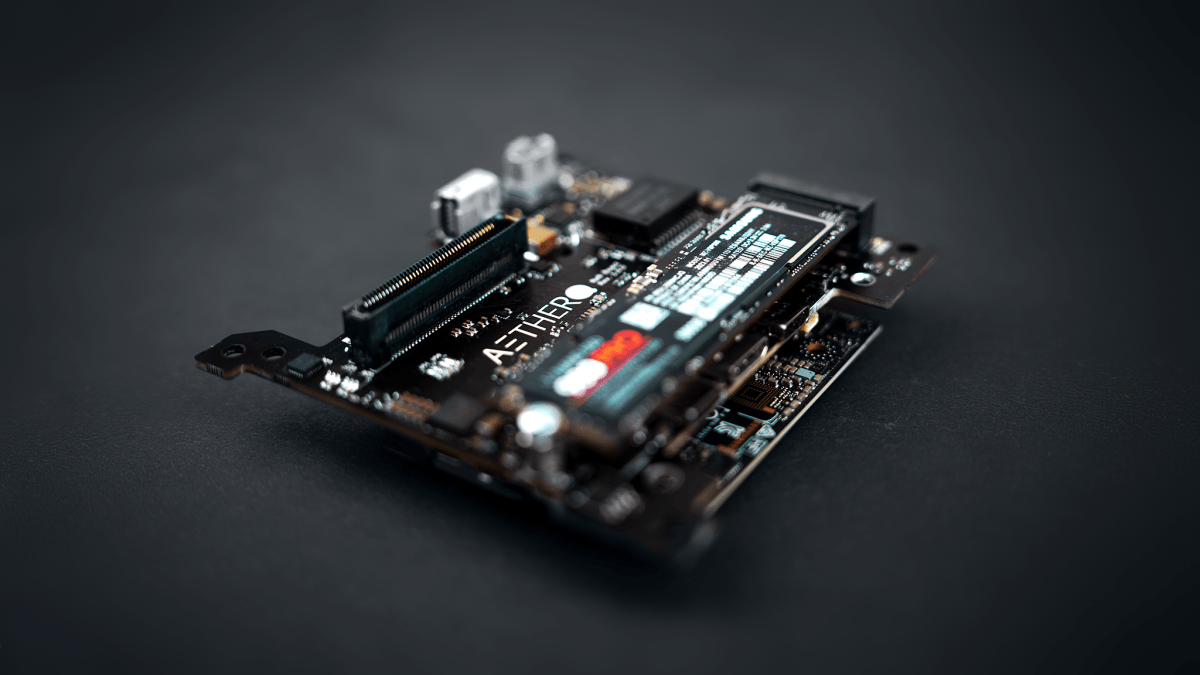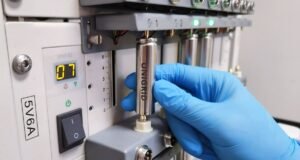Satellite sensors play an essential role in collecting massive amounts of raw data from space. However, with limited on-orbit computing capabilities, operators face significant challenges when it comes to processing this data in space.
To address this issue, Aethero, a recently established startup, is set on transforming the current landscape. It aims to develop radiation-hardened edge computers specifically designed for on-orbit data processing, and ultimately, autonomous decision-making processes.
“Right now pre-processing of space data is the larger market, but we anticipate that as the years go on, and as there’s more orbital assets, enabling autonomy for spacecraft is going to be massive,” says co-founder and CEO Edward Ge in a recent interview.
Ge, alongside his co-founder Amit Pinnamaneni, grew up in the same small Michigan town. Together, they founded Stratodyne in 2020, a startup focused on using high-altitude balloons for remote sensing. However, in January 2022, the company dropped out of Y Combinator’s winter cohort due to legal issues relating to International Traffic in Arms Regulations (ITAR).
After the setback, Ge and Pinnamaneni returned to the University of Michigan, where Pinnamaneni pursued graduate research on embedded systems in hostile environments, particularly in the context of high-radiation spaceflight environments. This is where the duo first started developing the hardware that would become the foundation of Aethero.
Although there may not seem to be an immediate connection between high-altitude balloons and on-orbit computing hardware, Ge claims that both ventures face similar challenges. The current space computers rely on outdated field-programmable gate arrays (FPGAs) with limited capabilities, hindering their ability to handle computationally-intensive tasks, such as training models or deploying advanced computer vision algorithms.
“We realized that the problem isn’t getting enough data from space […] the problem is one, getting data from the sensor in space to the end user fast enough, and two, enabling the satellites in orbit to make real-time decisions on their own,” Ge explains.
With a pre-seed funding round of $1.7 million, secured in the fall of last year, Aethero has ambitious plans to enable such capabilities. The startup’s first-generation space computer, called the AetherNxN, is based on an Nvidia Orin processor. As Ge states, Orin is currently the best GPU edge processor on the market, and using proven hardware will allow Aethero to make significant strides right from the start. The AetherNxN has a lifespan of 7-10 years in low Earth orbit, and it can even fit onto smaller platforms like CubeSats. What’s more, it offers 20 times more processing power than existing options.
Additionally, Aethero plans to release a larger, second-generation module for larger spacecraft before transitioning to a proprietary space processor. According to the startup, switching to a proprietary, domain-specific processor has multiple advantages, such as lower power consumption and enhanced performance. Aethero is also looking to collaborate with computing giant Intel to manufacture their proprietary processor around 2026, although Ge clarifies that this timeline is subject to change depending on various factors.
With a team of five, Aethero is currently preparing to send their minimum viable product (MVP) to space three times this year. One of these missions will launch this June on SpaceX’s Transporter-11 rocket, where the Aethero team will demonstrate its functionality in space. This includes showcasing its ability to deliver over-the-air updates to onboard computer vision models and train these models using data collected by the same spacecraft.
Although Ge cannot discuss Aethero’s current customer base, he mentions that the startup has seen a high demand for their product in the Earth observation market, as well as among on-orbit servicing companies and private space stations. For instance, Ge notes that the International Space Station (ISS) generates terabytes of data daily, and edge computing could revolutionize data processing in space.
“We see ourselves as becoming the Intel or Nvidia of the space industry,” Ge adds.








